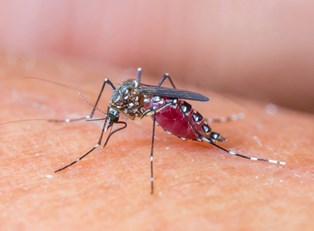We’ve all heard the term “killer bee,” which no doubt conjures some pretty scary images of deadly insects, but how killer are these bees? What makes them different from regular bees? You might be surprised to find out which common conceptions about these killers are fact and which are fiction.
Where are killer bees from?
Africanized honey bees, commonly called killer bees, are a hybrid of the Western honey bee species introduced in Brazil during the 1950s.
The species initially came to be through cross-breeding of the African honey bee with various European honey bees in an attempt to form a species that would produce more honey. Though it was a success, the project did not go perfectly. In 1957, nearly 30 swarms escaped their quarantine. They quickly spread throughout South and Central America before arriving in North America in 1985.
Given their name and reputation, it’s no wonder that killer bees are often thought to be larger bees with much more powerful stings than those of the average honey bee. This is not the case, however. Typically killer bees are slightly (around 10%) smaller, if not the same size as their non-killer counterparts, making them almost impossible to distinguish from regular honey bees. It might also surprise you to know that the sting of a single killer bee is actually less potent (less venomous), than a sting from a regular honey bee.
What makes them killer?
What earned these animals their killer moniker is their extreme defensiveness and aggressiveness. On average, killer beehives will contain 10 times the amount of soldier bees, or those that vacate the hive to attack in the event of a perceived threat, which can be something as simple as making a noise or causing slight vibrations nearby.
Following their awareness of such a threat, normal bees might attack after 30 seconds or so, but It usually takes less than five seconds for killer bees to mobilize and attack. Also, normal bees typically don’t give chase to threats for more than 20 yards, but a killer bee swarm might chase a person or animal for over a mile before ending their attack. So, compared to normal honey bees, killer bees react more quickly to threats, attack in larger numbers, and pursue threats longer.
How do you identify a killer beehive?
Since they don’t look much different from normal bees, there’s no surefire way to distinguish between a normal beehive and a killer beehive. Killer bees are slightly darker and smaller than other bees, but the difference is so small that it’s difficult to notice. Their hives do more often appear in ground cavities compared to normal honeybees, but other than that, there is little way to make the distinction.
How should an attack be handled?
If you do happen to be attacked, immediately make for the nearest shelter. This excludes jumping into a pool of water since killer bees will wait for victims to resurface. Killer bees have been known to stay agitated for up to 24 hours, so remain safely away from the area once you’ve escaped. As you’re escaping, don’t bat at the insects, but cover your face and neck (most attacks see victims stung primarily in these areas.).
Following an attack, you’ll need to remove any stingers that might be embedded in your skin. The more quickly this is done, the less likely you are to be adversely affected by the bees’ venom. Excluding severe attacks (50-100 stings), the large majority of killer bee stings do not require immediate medical attention, but if you are uncertain, contact your physician or call Poison Control (1-800-222-1222).



